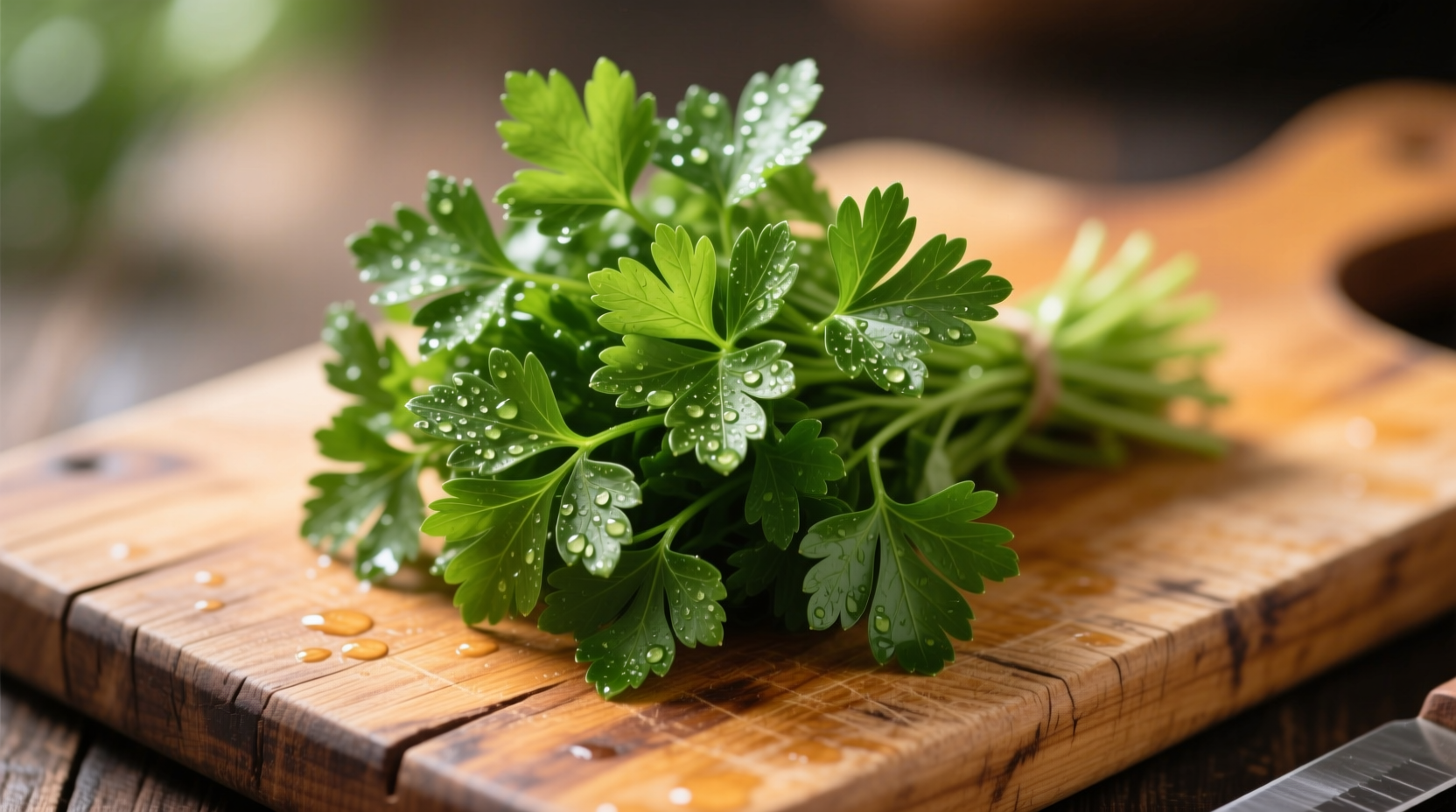One cup of fresh parsley (30g) delivers over 1,200% of your daily vitamin K needs, 100% of vitamin C, and significant amounts of vitamin A, folate, and iron—all for just 11 calories. This nutritional powerhouse supports bone health, immunity, and antioxidant protection when incorporated regularly into your diet.
Discover why this humble herb deserves a starring role in your kitchen beyond just garnish duty. As a culinary expert with deep knowledge of European herb traditions, I've analyzed the latest nutritional research to bring you actionable insights you can use today.
The Complete Nutritional Breakdown of Parsley
Most people underestimate parsley's nutritional density. According to USDA FoodData Central, a single cup (30g) of fresh parsley contains:
| Nutrient | Amount per Cup (30g) | Daily Value % |
|---|---|---|
| Calories | 11 | 0.5% |
| Vitamin K | 1,230 mcg | 1,200%+ |
| Vitamin C | 30 mg | 100% |
| Vitamin A | 2,200 IU | 44% |
| Folate | 30 mcg | 8% |
| Iron | 1 mg | 6% |
This impressive profile makes parsley one of the most nutrient-dense herbs you can add to your diet. Unlike many other herbs, parsley provides substantial amounts of multiple essential vitamins in just a small serving.
Parsley vs Other Common Herbs: Nutritional Comparison
When comparing parsley nutrition facts to other popular herbs, parsley consistently outperforms in key nutrients:
| Herb (1 cup) | Vitamin K (mcg) | Vitamin C (mg) | Vitamin A (IU) |
|---|---|---|---|
| Parsley | 1,230 | 30 | 2,200 |
| Cilantro | 310 | 12 | 1,300 |
| Basil | 80 | 10 | 1,000 |
| Mint | 180 | 15 | 800 |
Source: USDA FoodData Central
Science-Backed Health Benefits of Parsley
Research published in the Journal of Agricultural and Food Chemistry confirms that parsley contains high levels of flavonoids, particularly apigenin, which demonstrates significant antioxidant activity. These compounds help combat oxidative stress that contributes to chronic disease development.
Vitamin K: The Bone Health Powerhouse
Parsley's extraordinary vitamin K content (more than any other common herb) plays a crucial role in bone metabolism. According to the National Institutes of Health, vitamin K activates osteocalcin, a protein that binds calcium to bones. Regular consumption of vitamin K-rich foods like parsley correlates with improved bone density and reduced fracture risk, particularly in postmenopausal women.
Vitamin C: Beyond Immunity Support
While most recognize vitamin C for immune function, parsley's substantial vitamin C content (100% of your daily needs in one cup) also supports collagen production. This structural protein keeps skin firm and joints flexible. The Linus Pauling Institute notes that adequate vitamin C intake is associated with reduced signs of aging and improved wound healing.
Antioxidant Protection Against Chronic Disease
Parsley contains more than 10 different antioxidant compounds, including lutein, beta-carotene, and zeaxanthin. A 2021 review in Nutrients highlighted how these compounds work synergistically to reduce inflammation markers associated with heart disease and type 2 diabetes. The study concluded that regular consumption of antioxidant-rich herbs like parsley contributes to long-term cardiovascular health.

Maximizing Parsley's Nutritional Benefits: Practical Tips
Understanding parsley nutrition facts is only half the equation—you need to know how to incorporate it effectively into your diet:
Fresh vs. Dried: Nutritional Differences
Fresh parsley contains significantly higher levels of vitamin C and volatile compounds than dried. However, dried parsley concentrates certain fat-soluble nutrients like vitamin K and carotenoids. For maximum nutritional benefit, use fresh parsley raw in dishes whenever possible.
Storage Techniques That Preserve Nutrients
Research from the University of California Davis shows that storing parsley upright in water (like flowers) in the refrigerator preserves 90% of its vitamin C content for up to 10 days. Avoid washing until ready to use, as excess moisture accelerates nutrient degradation.
Culinary Applications for Maximum Benefit
Contrary to popular belief, light cooking can actually increase the bioavailability of certain nutrients in parsley. A study in the Journal of Food Science found that brief steaming (2-3 minutes) increased the absorption of carotenoids by 25%. Try these simple ways to incorporate more parsley:
- Add chopped parsley to scrambled eggs during the last minute of cooking
- Blend into smoothies (the chlorophyll content masks the flavor)
- Create a parsley pesto using olive oil, garlic, and lemon juice
- Stir into soups and stews just before serving
- Make a parsley salad with lemon vinaigrette
Important Considerations for Specific Health Conditions
While parsley nutrition benefits most people, certain individuals should moderate consumption:
- Blood thinner users: Due to extremely high vitamin K content, those taking warfarin should maintain consistent parsley intake rather than fluctuating amounts. Consult your physician about appropriate consumption levels.
- Kidney stone history: Parsley contains moderate oxalates. Those prone to calcium oxalate stones may need to moderate intake.
- Pregnancy: While culinary amounts are safe, medicinal quantities of parsley oil or supplements should be avoided during pregnancy.
These context boundaries ensure you can safely enjoy parsley's nutritional benefits while managing specific health considerations.
How Much Parsley Should You Eat Daily?
For general health maintenance, aim for 1-2 cups (30-60g) of fresh parsley daily. This amount provides substantial nutritional benefits without exceeding recommended vitamin K intake for most people. Start with smaller amounts if you're new to consuming parsley regularly, as some people experience mild digestive adjustments when significantly increasing herb intake.











 浙公网安备
33010002000092号
浙公网安备
33010002000092号 浙B2-20120091-4
浙B2-20120091-4